The Design of "Love at Mid-Autumn" 繼續《愛在中秋》
Curated by fête Chinoise editorial team
intro by Deborah lau-yu
On Chinoiserie by Amelia Zhu
Love at mid-autumn design 2022
In 2022, the team at Fête Chinoise continued the design mission at Mid-Autumn Festival with a special edition mooncake tin for “Love at Mid-Autumn” charity campaign. Much like in the previous year, the programme delighted and created a special memory for many families. Whereas 2021’s limited edition tin design was inspired by vintage Cha Chaan Tengs of Hong Kong and details from the Shanghai Peace Hotel, the 2022 design took on a very universal approach with the adaptation of the widely familiar Famille Rose design in Emperor’s yellow.
Each keepsake tin housed our signature heart-shaped mooncakes, stamped with an illustrated floral from the 萬壽無疆 pattern. Created in partnership with Saint Germain Bakery, the package full of love and inspiration was delivered to over 900 families to celebrate the festival and tradition of mooncake eating while admiring the full moon and lighting lanterns. The campaign donated over $50,000 to SickKids Foundation’s Ukrainian Paediatric Assistance Fund and the Herbie Fund to spread love, hope and unity in a year of war.
On the following pages, you will have a chance to read about the inspiration behind the 2023 design which is a dominant theme of this edition: Chinoiserie. Enjoy our design process!
Design Process Work for Fête Chinoise Love At Mid-Autumn 2023《愛在中秋 2023》的「中國風」月餅罐設計過程
Photographed by Calvin Lee
Design Process Work for Fête Chinoise Love At Mid-Autumn 2023《愛在中秋 2023》的「中國風」月餅罐設計過程 Photographed by Calvin Lee
2022年,Fête Chinoise 團隊再次集合加拿大華人社區龐大的力量,舉辦了《愛在中秋慈善月餅籌款活動》。跟以往一樣,計劃為許多家庭帶來了歡樂,並寫下了美好的回憶。 2021年的限量版月餅罐設計靈感來自香港的復古茶餐廳和上海和平飯店; 2022年則的採用了家傳戶曉的「萬壽無疆」圖案做主題,再配上鮮艷黃色,充滿集體回憶之餘亦帶來新鮮感。
月餅罐內是四個 Fête Chinoise 獨有的心形月餅,上面印有萬壽無疆圖案。 這個與Saint Germain 餅店合作,充滿着愛的月餅套裝被送到了900多個家庭,在賞月和玩燈籠的同時延續吃月餅的節日傳統。 該活動向SickKids 基金會的烏克蘭兒科援助基金和Herbie 基金捐贈了超過50,000 加元,希望在戰爭中的一年傳播愛和團結的信息。接下來,來與我們一起享受這個美麗的設計過程!2023 《愛在中秋慈善月餅籌款活動》的設計主題 — 中國風。
Design Process Work for Fête Chinoise Love At Mid-Autumn 2023《愛在中秋 2023》的「中國風」月餅罐設計過程 Photographed by Calvin Lee
Sponsored by Ferris Wheel Press
on chinoiserie
風靡18世紀歐洲的「中國風」
By Amelia Zhu, Senior Specialist / Business Development at Waddington’s Auctioneer and Appraisers
朱欣然, 加拿大沃丁頓拍賣行,資深專家 商務拓展
Chinoiserie is the European interpretation and imitation of Chinese and East Asian art. "Chinoiserie" comes from the French word for "Chinese”. It first entered European art in the late 17th century, and peaked around the middle of the 18th century, coinciding with the Rococo style. Rococo was defined by lightness, fantasy, asymmetry, and nature. As Chinoiserie developed alongside Rococo, the Chinoiserie style is derived from the European interpretation of East Asian leisure, pleasure, and nature.
Waddington's Auctioneers & Appraisers Chinese Hardstone-Inlaid Six-Panel Floor Screen, Late Qing
晚清/民國黑漆描金嵌寶六扇扇風
The inspiration behind Chinoiserie was based on 18th-century European ideas of China, and also from their concepts of Japan, Korea, Southeast Asia, India, and Persia. It was closely related to the study of Orientalism and was influenced by the rise in demand for imported Chinese and Indian goods such as textiles, porcelain, lacquers, and spices, which were provided by lucrative English, French, Spanish, Portuguese, and Dutch trading conglomerates, including the famous Dutch East India Company. The popularity of Chinoiserie was not only limited to Europe, prevailing in wealthy British and Latin American colonies, and had local interpretations in India, Japan, and Persia, which sought to capitalize on the profitable demand in Europe, as well as cater to the local tastes of wealthy colonial residents.
Chinoiserie motifs were interpreted in all sorts of European paintings, gardens, interior design, and architecture. Products included wallpaper, furniture, screens, and household items including porcelain wares. Common motifs included pagodas, dragons, gardens, birds and flowers, and more. Among all of the motifs, birds and flowers were one of the most representative and charming of Chinese aesthetics.
Waddington's Auctioneers & Appraisers One of the
Group of Five Framed Chinese Embroideries, Late Qing Dynasty 晚清绣片一组五件
Sponsored by Ferris Wheel Press
「中國風」源於18、19世紀歐洲工匠模仿及詮釋以中國為代表的遠東地區傳統藝術的風格,Chinoiserie一詞是法文「中國的」或「中國人」的意思。該藝術風格於十七世紀後期首次進入歐洲,並在十八世紀中葉左右達到巔峰,與同期盛行歐洲的洛可可風格並駕齊驅。洛可可風格的特徵是輕快、奇幻、不對稱與自然,常與「中國風」被視為歐洲對東亞文化和樂美好、休閒愉悅的理解與定義。
「中國風」不限於中國,更泛指包括日本、韓國、東南亞、印度和波斯等亞洲地區。它與東方學研究密切相關,也受到從中國和印度進口紡織品、瓷器、漆器和香料等商品需求上升的影響,商品由包括著名的東印度公司在內,來自英、法、⻄、葡萄牙和荷蘭各地的貿易集團長期供往歐洲市場。「中國風」的流行不僅限於歐洲,同時風靡富裕的英國和拉丁美洲殖⺠地。在印度、日本和波斯也有本土化的詮釋,既滿足了歐洲市場利潤豐厚的需求,又迎合了當地殖⺠地富裕貴族的品味。
「中國風」的主題與圖樣被用於各種歐洲繪畫、園林、室內和建築設計中,衍生的產品包含牆紙、家具、屏風和瓷器等家居用品及裝飾物。常見的圖案包括寶塔、龍紋、庭院及花鳥等。其中花鳥圖樣被視為最具中國韻味的代表,且最為流行。
The tradition of birds and flower paintings began in the 10th century during the Song dynasty. Art during this period was elegant, diverse, eclectic, and otherworldly, and was considered the pinnacle of Chinese aesthetics. Led by the maturation of Chinese literati culture, along with imperial appreciation, participation, and patronage for painting by Emperor Huizong and Gaozong, the Song dynasty style of birds and flowers painting was perfected and canonized for the subsequent dynasties to revere and emulate. Due to the widespread and applicable nature of this motif in Chinese art, it resonated particularly well with the Chinoiserie movement centuries later.
Another Chinese tradition that came easily to Chinoiserie was embroidery, which has a deep history. The production of silk in China can be traced back to 4,000-5,000 BC. With the use of silk, embroidery techniques gradually evolved, and hand-embroidered techniques matured and developed the course of over two thousand years. There are numerous kinds of embroideries, each with its own style, and prevalent even in modern-day China. Embroideries are valued based on the use of expensive materials, such as gold thread, and the technical prowess required to execute masterful techniques, such as kesi and forbidden knots. Chinese embroidery eventually became one of the primary mediums for Chinoiserie to propagate, and patrons incorporated embroideries imported from China, India, and the Middle East, as well as local creations within Europe, into their designs and homes. Large quantities of silk-woven clothing, carpets, tapestries, screen, wallpapers, and other embroidered creations entered royal palaces and living rooms alike.
Waddington's Auctioneers & Appraisers Chinese Hardstone-Inlaid Six-Panel Floor Screen, Late Qing
晚清/民國黑漆描金嵌寶六扇扇風
Sponsored by Ferris Wheel Press
As the centuries passed, embroideries used in Chinoiserie appeared in antique markets and auction houses. Even through the test of time, these works of art still hold their beauty and value. For example, a set of four “Gu-Family” embroideries sold at Waddington’s in December 2022. “Gu” embroidery originated during the Jiajing reign of the Ming dynasty. It recreated landscapes, figures, birds and flowers, and other themes found in Song dynasty paintings. These works have certainly served as a source of inspiration for the Chinoiserie movement in the centuries afterwards.
Waddington's Auctioneers & Appraisers A Set of Four 'Gu-Family' Embroidered Satin and Pearlwork 'Four Gentlemen' Silk Panels,
18th Century
清十八世紀顧繡輯珠「梅蘭竹菊」掛屏一套四張
Each finely embroidered with the 'four gentlemen' — plum blossom, orchid, bamboo and chrysanthemum — against a golden honey-toned satin ground, embroidered using silk threads of various colours and worked with minute seed pearls
Some of the best examples of embroideries are mostly kept in major museums that contain Chinese art such as the Palace Museum, the British Museum, the Metropolitan Museum of Art, and the Royal Ontario Museum, as well as private collections around the world.
Samples of Chinoiserie can also be found at Waddington’s, such as a hardstone-inlaid six-panel floor screen from the late Qing /Republican period, which has been offered in our spring 2023 auction. This screen features a black lacquer foundation that is skillfully inlaid with semi-precious hardstones such as agate, jade, lapis lazuli, and mother-of-pearl, all rendered in a three-dimensional low-relief manner to depict various birds, rockery, and floral groups. This genre of Chinoiserie-influenced furniture was popular in Europe and its colonies from the 18th century all the way until the early 20th century. They were produced and exported in large quantities from Guangzhou to many Western destinations.
These pieces embodied the West’s infatuation with the East and the constant pursuit of the highest and most exotic form of Art.
比如由我司於2022年所出售的一套顧繡屏風。顧繡源於明代嘉靖年間,以摹仿宋畫中的山水、花鳥、人物等,以繡代畫,精工奪巧、氣韻生動,可謂集傳統工藝美術之大成。也成為「中國風」席捲歐洲的靈感來源。最佳的刺繡作品大多收藏於故宮博物院、大英博物館、大都會藝術博物館和安大略皇家博物館等頂級博物館,以及世界各地的私人收藏。
另一「中國風」題材作品,可參考我司今年春拍中一套拍賣晚清/⺠國時期黑漆描金嵌寶六扇屏風。黑漆底色上巧妙鑲嵌瑪瑙,翠玉,⻘金石及天然母貝等珍貴寶石,立體呈現於屏風板面之上,構成六幅精美的鳥石花卉圖。此類「中國風」圖案和設計元素的屏風類家具從十八世紀至二十世紀初一直深受歐洲喜愛,經由廣州十三行等地大量外銷至歐洲。充分體現了歐洲人對亞洲地區精緻並充滿異國情調的理解,喜愛與追求。
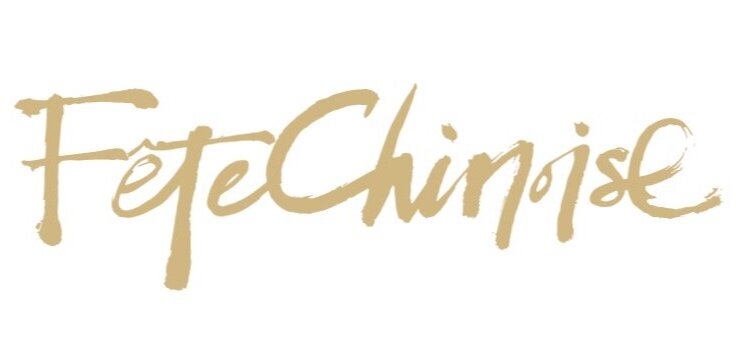



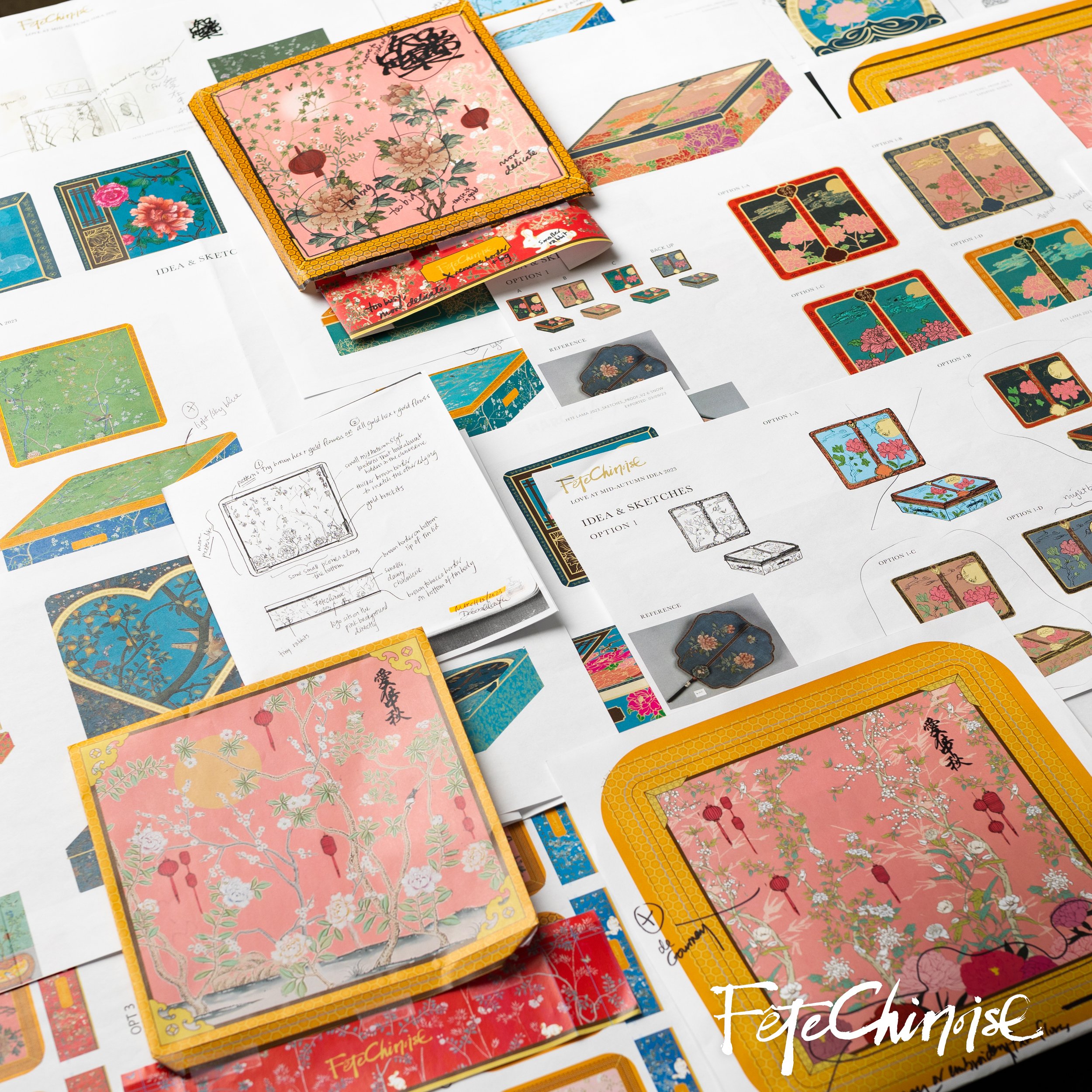




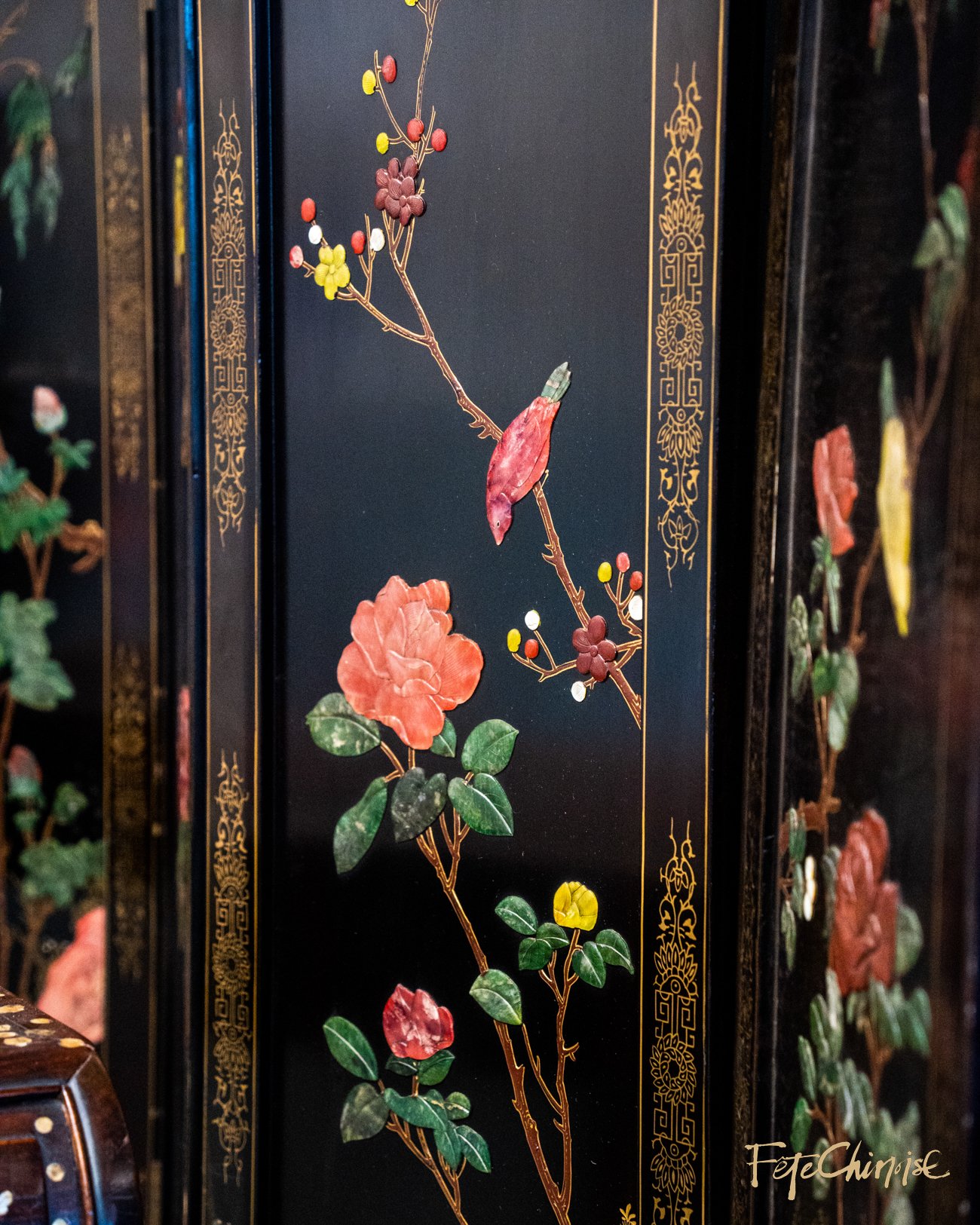













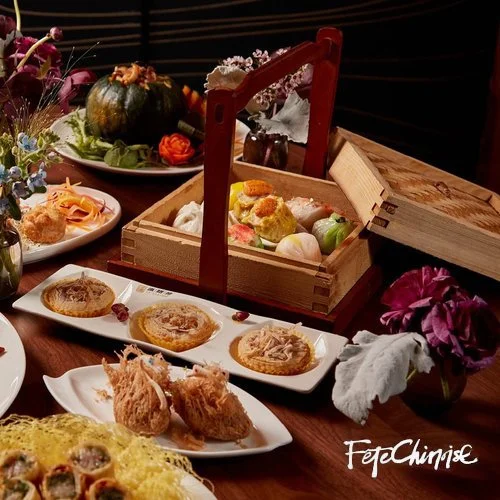

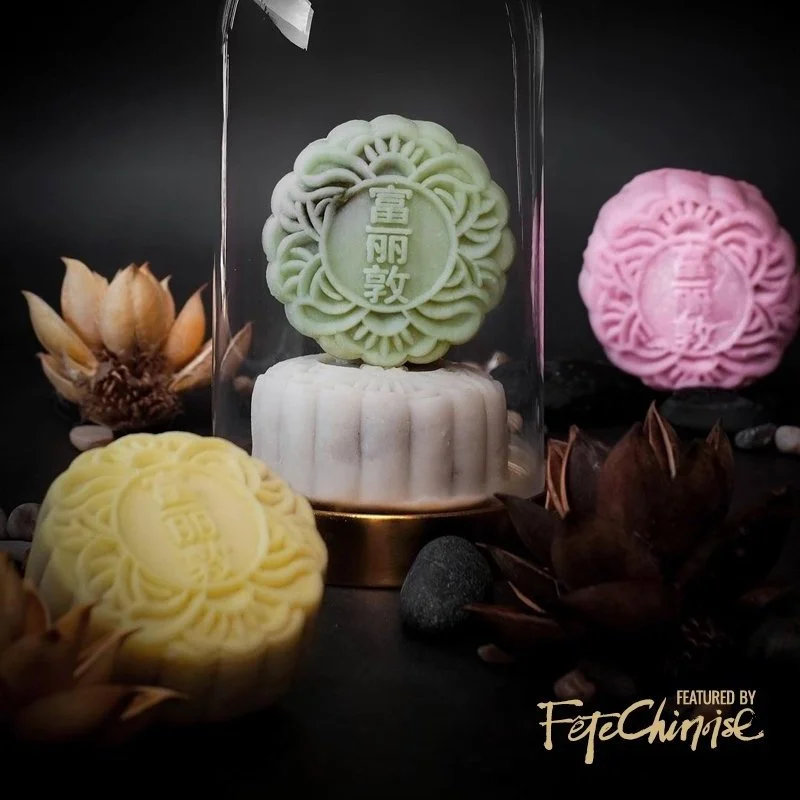

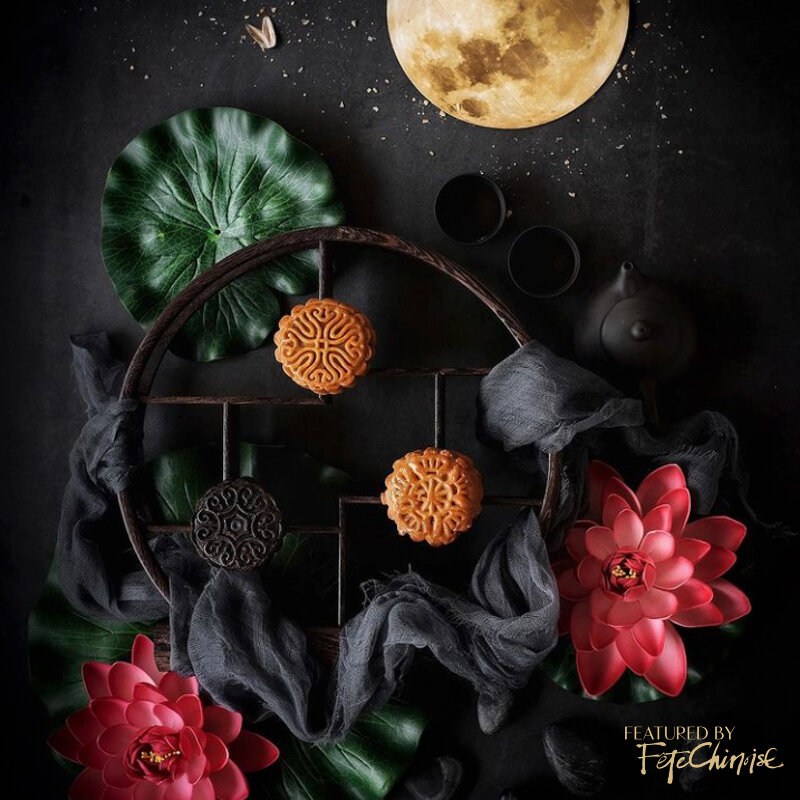

![Mid-Autumn Crafts Workshop 中秋中式手工制作课 [SOLD OUT]](https://images.squarespace-cdn.com/content/v1/55e06149e4b0e924d81546a2/1600797768532-Z5AV8FPYS4QQX8MG2CHV/DSC03838b.jpg)

In this article, you will have a chance to read about the inspiration behind the 2024 design which represents the feature story in this edition: the disappearing neon lights of Hong Kong’s streetscapes. Each and every handmade glowing neon sign symbolizes a life and history — a dream, a business, a family’s livelihood and service to the local community. This year’s tin design is a love letter to Hong Kong’s infamous vistas, full of life and vitality, and the city’s spirit, hustle, and bustle. Enjoy our design process!